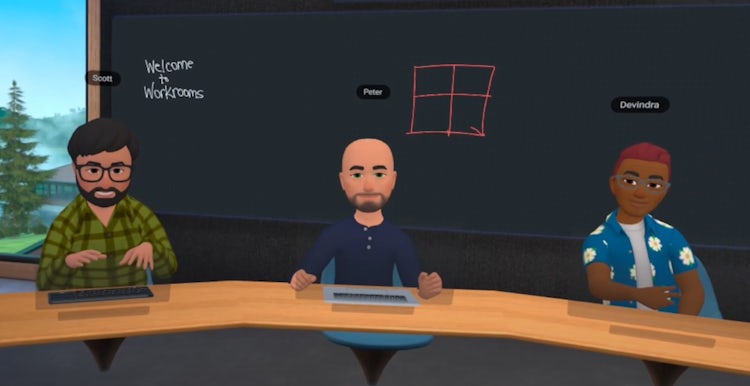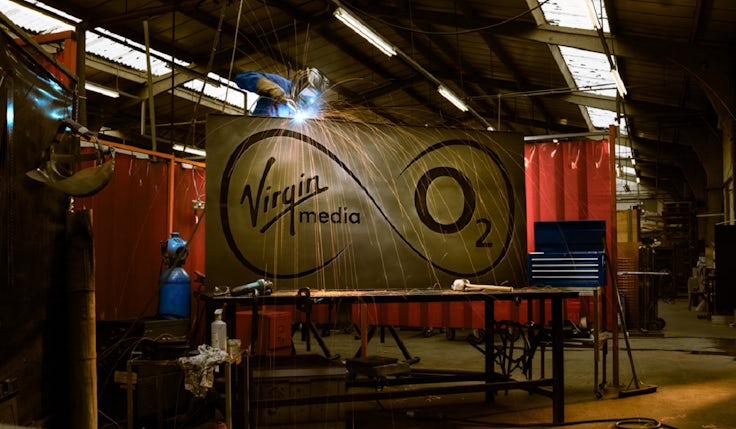Facebook’s Horizon Workrooms sucks ass
Facebook’s new virtual meeting software falls victim to one of marketing’s worst sins, product orientation, simply because Mark Zuckerberg needs to find a use for virtual reality to justify his investment in Oculus.
 Facebook’s latest innovation, Horizon Workrooms, sucks an enormous amount of ass. Launched last week, the new software enables different users located in different geographies to join up in a virtual meeting space and work together.
Facebook’s latest innovation, Horizon Workrooms, sucks an enormous amount of ass. Launched last week, the new software enables different users located in different geographies to join up in a virtual meeting space and work together.
That sounds great, and the initial response to Workrooms has been devoid of the ass-sucking conclusion that almost everyone will eventually reach. That’s not because I am wrong; but because most of the people who have used the new software so far either work for Facebook, have an immediate connection to Facebook, or are the kind of tech heads who think everything new is amazing, especially if it involves a headset.
And Workrooms definitely does require a headset. That’s where the ass sucking properly begins. There is certainly a market for virtual meeting software. In a time of global trade, Covid lockdowns and the speeding up of business, most of us meet with colleagues in non-physical contexts on a daily basis. But consider the two paths to doing that – the existing one and the innovative, ass-suckingly bad one that Workrooms represents – and the issues become immediately apparent.
Let’s assume I have a 10am with six colleagues. Either:
I get a calendar reminder that I have a meeting. I open my calendar and click on the link. Three seconds pass (30 if you use Microsoft Teams) and my colleagues pop up around my screen. In the incredibly rare event that someone does not have the requisite software, they download it in 10 seconds, popping up momentarily later. Someone is on mute. We feel each other’s weather/Covid pain for a few seconds. Someone says, “so let’s get going…” and we go. Occasionally a person shares their screen, which takes three seconds (minutes if you use Teams) and after the cursory “can everyone see this?” we see it and continue.
Alternatively, in the new world of Workrooms, I go out and buy a £300 virtual-reality (VR) headset. I charge it up. I download the Workrooms app. I create a cartoon avatar of myself. I scan my desk so that I can have a virtual version of it inside my app. I get used to the two handheld joystick things so I can draw crude shapes on the virtual blackboard. I learn to type on my virtual keyboard. For the members of the team that have not been through this process (most of them) there is no way to quickly join, so they watch the cartoon versions of their colleagues from a screen in the centre, interjecting occasionally to remind everyone about the real world and how fucking stupid this whole cartoon thing actually is.
Tiffany’s brand needs an update – in fashion, that means alienating loyal customers
You see what I mean? It is mind bogglingly unlikely that management teams (outside of Facebook HQ) who rely on uniform, immediate access to a shared platform are going to bother with the umpteen steps and month-long familiarisation that Workrooms demands. In a great irony, given Covid-19 is one of the big reasons for its existence, Workrooms will die because it is simply not contagious enough.
And even if it were accessible and you could enjoy one-step, immediate access to Workrooms, you would still avoid it. Because the set-up to be able to use Workrooms is not the only thing that sucks ass. The app does too.
Lack of human connection
Have any of the development team actually been in a meeting before? It’s not like fighting in Vietnam or playing table tennis. I do not need a 360-degree view of the meeting as it occurs. I know what is going on all around me during a meeting: nothing. I don’t need to turn my head and get the jerky 360-degree hyper sickness that comes with it. It’s actually an advantage not to have these distractions in a meeting. Zoom or Google Meet provide a rare, tech-induced level of focus that I appreciate.
Another facet of business that also escaped Workrooms’ development team were faces. You know, real ones. Attached by a neck to real humans. Most of us like to see the people we meet with, and have them see us. Some of the more important nuances of business are the non-verbal cues and tacit communication that take place, whether online or off, when people interact.
The bullshit stat is that more than 70% of communication is non-verbal and that’s probably an underestimate. We all rely on millennia of evolution to contextualise what is being said and not being said by others. Try doing that with these empty, infantile automatons that you need to spend time to replace yourself with. Look into the cold, dead eyes of Scott, Peter and Devindra, below, and tell me which one is uncomfortable with your proposal? Which one loves it? Which one muted his microphone, slipped off the headset and padded off downstairs for a crap and a read of the paper? (Clue: it’s Scott.)

I did a very large amount of acid during university. Industrial quantities of the stuff. Consequently, I have visited some pretty strange and unpleasant worlds. But in all my travels, I cannot remember anything less appealing or more appalling than the sanitised, curiously sociopathic environment that Workrooms represents.
The idea that I would invite senior managers to strap on their dingus for a marketing review and enter Workrooms for the next four hours is incredibly unlikely. Imagine a day of meetings. Attached to a headset. Locked into that empty void. Assailed by unsmiling avatars watched jerkily from behind your virtual desk. While the real world goes on ignored.
And it’s not as if any of this flawed functionality is in any way superior to the existing technology we already use. “Five years from now,” Zuckerberg predicted last week, “people are going to be able to live where they want and work from wherever they want – but are going to be able to feel present as if they’re together when they’re doing that.”
I hate to break it to Zuckerberg, but that was 2020. We have moved on. And Facebook should worry when its chief savant mistakes a rear mirror for a crystal ball.
Product orientation
Stupidly conceived. Hard to access. Less enjoyable to use. Devoid of human interaction. Inferior to existing technology. The real question is not whether Workrooms sucks ass. Or whether it will fail abysmally because of its ass suckery. The real question is how Facebook – a company with its finger on the pulse of technology, a gift for capturing human interactions online and billions in development capability – could get it so horribly, horribly wrong.
The best clue can be found in the Workrooms interview with Mark Zuckerberg below. I wonder if you can spot the moment where Zuck reveals the real reason for Workrooms?
Did you catch it? After a minute of extremely unpersuasive BS about Workrooms, Zuckerberg briefly shows his cards. In the final 10 seconds of the clip, he concludes that Facebook is going to be “focused on this” because “we think it’s gonna be a big use for VR”.
Almost a decade ago, Facebook splashed out $2bn on a VR headset company, Oculus. Zuckerberg made it clear at the time that he saw VR as a “new communication platform” that would disrupt the current media world forever. Facebook’s founder would frequently cite computers, smartphones and the internet as things that were once “science fiction” that had now become reality. And he saw VR as the next innovation on that list. But in the years since his big acquisition and even bigger investment in the headset company, both Oculus and the world of VR have disappointed.
Zuckerberg’s long-standing belief in VR, combined with his new-found associated passion for the ‘metaverse’, have blinded him and his company to the practicality and potential of Workrooms. He needs his investment in VR to bear fruit. Equally importantly, he knows that the incredible dominance of Facebook in this current tech window cannot last much longer. And he has already staked a big part of Facebook’s future on an immersive, advanced experience that he must now start to build.
When the manager in charge of leadership and marketing and strategy exhibits a product orientation, there is always trouble ahead. Always.
All of this blinds him to the reality of the target customer, and gives him a false perspective on the value of Workrooms. To use the technical term, Zuckerberg is guilty of one of the oldest sins of marketing. He is product-oriented.
There is nothing wrong with product orientation if you are an engineer or engaged in research and development. You actually want to be product-oriented in these roles. But when the manager in charge of leadership and marketing and strategy exhibits a product orientation, there is always trouble ahead. Always.
A product-oriented manager does not see the world that the consumer sees because they see only from the point of view of their product. To reverse the famous Ted Levitt quote, they aren’t selling a six-inch hole, they are selling their amazing new Powerdrill4000 with all the features that customers don’t really want or understand. And they get excited at the prospect of customers, not because they can learn from them, but rather can teach them just how good their product really is. If only – these managers proclaim, in their most enthusiastic and deluded moments of product orientation – the market could see the world the way that we see it. How wonderful would that be?
Blind to consumer needs
In my Mini MBA in Marketing course, I make the class watch a Levi’s executive develop a new product for the company. He starts out as the prototypical marketing manager. He listens attentively in focus groups and analyses quant data as if his life depends on it. The young marketer spends his time “learning”, “understanding” and being “surprised” by every glimmer of customer interaction.
But as he spends months of his life and millions of his company’s money on the new product, he gradually loses the marketing plot. He becomes deaf to the counter-arguments from potential customers and the gentle nudging from colleagues and his ad agency. “But when they see the product that they currently do not want,” he exclaims at one point during his mania, “a little asterisk will appear and they will understand how much they want it.”
Product orientation is a double killer. It blinds us to the voice of the customer while fictionally bolstering the demand for a product that no one will ever want. Enthusiasm and optimism are brilliant traits in a librarian, and terrible ones in marketers developing new products. They breed product orientation, which, in turn, kills the need for research and the ability to spot any of the important insights that might have emerged from it.
For all Facebook’s power and control, it is, like every other organisation, a prisoner to the ultimate boss of everything: the consumer. And the most powerful trait of any organisation is market orientation. Some call it customer centricity; others, consumer focus. Jeff Bezos always referred to it as “customer obsession”. It has a dozen names but they all mean the same two things:
Jeff Bezos’s success at Amazon is down to one thing: focusing on the customer
At the organisational level, a capability to bring the voice of the customer into the business and impact the decisions that are taken over time. At the individual level, the need for marketers to swivel their perspective 180 degrees – from why they think customers need their product to what those customers actually think of it.
It sounds so simple right? Listen to your customers. What could be easier?
But as Mark Zuckerberg and Facebook are about to demonstrate with Workrooms, this is a malaise as old as the marketing hills and as pernicious as the worst possible external threat. Companies have a need for what I call the humility of marketing. For a special kind of paranoia. For worst-case scenarios. For evidence. And for marketers who are brave and skilled enough to ask the right questions and then report back the right interpretation of the subsequently dismal data – irrespective of how much shit shakes out as a result.
Workrooms sucks ass. Facebook, a ferociously impressive operation, needs to be careful it does not eventually follow suit.
Mark Ritson teaches all about brand strategy on the Mini MBA in Marketing.








I have never read such drivel, you obviously have not tried this product as your motion sickness comment clearly shows (it’s impossible to get motion sickness when you are in a stationary VR experience, there must be motion in the screen to give you motion sickness!), This honestly reads like an internet troll and I hope Facebook sue you for slander! I’ve used this app for the past 4 weeks and it is amazing, it allows me and my team to have the office experience working side by side without being in a potentially covid infected real world office. Anyone who reads this please go try it for yourself and you see how far off the mark this author (troll) is!
Also this is free so how is it trying to get a return in investment, that’s already happened from the explosion in the market that is Quest 2 and all the games it’s sold. The more I read this article the more I find wrong with it